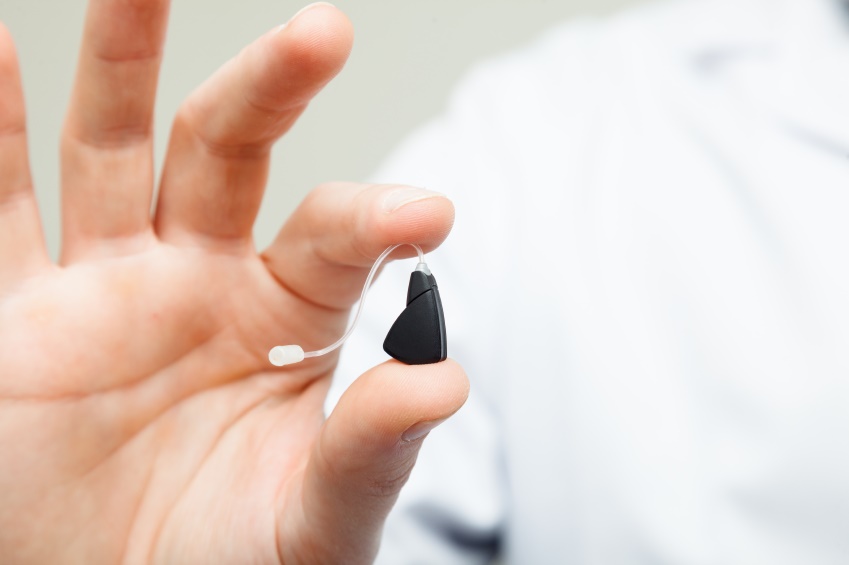
Hearing aid guides are not uncommon, but the majority are not exactly reader-friendly, either. Most are simply too long or complex, generating more perplexity rather than less.
My guess is that you’re a great deal less interested in the physiology of hearing or in the particulars of acoustical engineering and a lot more interested in locating the proper technology at an affordable price. Your intent is to hear better, not to read a 10-page manual.
If that describes you, then you’ll enjoy this brief guide to hearing aids. We’ll cover four brief parts, and when we’re finished, you’ll be set to work with your hearing care professional to find the technology that’s best for you. Let’s get started.
How All Hearing Aids Work
Deciding on a hearing aid can feel overwhelming—there are several brands and seemingly never-ending factors to consider. But it’s really not as complicated as it appears. As you move on through this guide, try to remember that all digital hearing aids function essentially the same way, and include these four fundamental parts:
- The microphone picks up environmental sound and delivers it to the digital processor.
- The digital processor modifies the sound signal according to the settings programmed by the hearing specialist. The customized sound signal is then directed to the amplifier.
- The amplifier increases the volume of the sound according to the programmed settings, amplifying only the frequencies the person has difficulty hearing (while suppressing background noise). This signal is next sent to the speaker.
- The speaker presents the enhanced sound to the ear, resulting in louder, clearer sound.
Additionally, all hearing aids include a battery, volume and setting buttons, and remote controls.
Hearing aids really only differ in two major ways: 1) style, and 2) advanced features. We’ll cover these in the next two sections.
Hearing Aid Styles
You have your choice of three main styles:
1. Behind-the-ear (BTE) hearing aids hook over the top of the ear and rest behind the ear. The case is then fastened to an earmold in the ear canal by a piece of clear tubing. BTE hearing aids are convenient to handle and clean, generally have an extended battery life, and can handle severe hearing loss.
2. In-the-ear (ITE) hearing aids occupy the outer part of the ear with a custom-molded shell. ITE hearing aids are smaller than the behind-the-ear hearing aids but bigger than the in-the-canal styles. This makes ITE hearing aids easier to handle than the smaller styles but less detectable than the BTE style.
3. In-the-canal (ITC) hearing aids and completely-in-the-canal (CIC) hearing aids fit partly or entirely inside of the ear canal, making them nearly or entirely invisible. ITC and CIC hearing aids are custom molded to the curves of the ear, and some types can be used for months at a time.
When deciding on a style, consider the tradeoffs among simplicity of use, battery life, and concealment. Your hearing care expert will help you prioritize your preferences and decide on the most suitable style.
Hearing Aid Advanced Features and Accessories
Once you’ve settled upon the most suitable style, you can figure out which of the following features you need—and which you don’t.
- Directional microphones permit you to focus on the sounds and conversations directly in front of you while reducing the interruption of loud background noise.
- Telecoils, or T-coils, allow you to talk on the phone while minimizing the static brought on by background noise.
- Environmental noise control allows you to enhance hearing based upon your environment, for example in a quiet room at home as opposed to in a chaotic restaurant.
- Direct input to sound sources such as TVs, radios, computers, and music players allow for clear sound without background noise.
- Wireless connection to mobile phones converts your hearing aids into high-quality wireless headphones. The hearing aid settings can be manipulated from the phone (or smart watch), and sound can be wirelessly streamed directly from the phone to the hearing aids.
Optional accessories include cleaning kits, storage cases, ultraviolet sanitizers, battery-changers, and more. Your hearing care professional can help you decide on which hearing aid accessories you may need or want.
Selecting the Right Hearing Aids
Before making an investment in hearing aids, take these four steps:
- Find a trustworthy, local hearing care professional. Only professionals with sufficient experience can evaluate your hearing properly, which is essential for when it comes time to program, fit, and calibrate your hearing aids.
- Focus on hearing aid styles and advanced features. Your pick of hearing aids will hinge on your preference of style and function. Explore these two factors with your hearing expert and your options will become manageable.
- Set a budget. Some would proclaim that your hearing is priceless, but that doesn’t mean you have a limitless budget. With all of the hearing aid choices available to you, you and your hearing specialist can uncover the right hearing aid at an affordable price.
- Test drive your new hearing aids. inquire about trial periods and test out your new hearing aids. Talk with your hearing specialist to set realistic expectations and give your hearing aids a chance to work. Your perseverance will be paid back when you realize the difference better hearing will make in your life.
And that’s it. What might appear to be a complicated process is in truth easily manageable, once you understand how to prioritize your needs and limit your choices. With the help of your local hearing care professional, you can find the most appropriate technology at the right price—so you can start taking pleasure in all of the advantages of better hearing.
